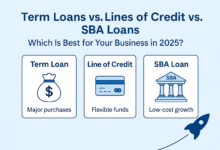In today’s hyper-competitive FinTech landscape, acquiring high-quality customers efficiently is more critical than ever. With traditional marketing channels becoming saturated, online information flow advertising has emerged as a powerful tool for FinTech companies to target the right audience, optimize ad spend, and drive conversions.
For U.S.-based FinTech firms, leveraging precise audience targeting, data-driven ad strategies, and compelling creative content can significantly enhance customer acquisition efforts. This article explores how FinTech companies can refine their digital marketing approach to attract and convert potential borrowers effectively.
1. Precision Targeting: The Foundation of Effective Customer Acquisition
To maximize ROI on ad spend, FinTech companies must accurately identify and engage their ideal customers. This requires a deep understanding of demographics, interests, and behavioral patterns.
1.1 Building a Detailed Customer Profile
A. Demographic Analysis
Industry data reveals that the primary audience for personal loans and credit products in the U.S. consists of:
- Ages 24–35 (young professionals and early-career individuals)
- Predominantly male (60%), though female borrowers are a growing segment
- College-educated (Bachelor’s degree or higher)
- Stable income (40K–40K–80K annual range)
- Tech-savvy, with high mobile usage (Android users slightly outnumber iOS in this segment)
For example, a U.S. FinTech lender analyzing its successful loan applications found that young professionals often seek loans for debt consolidation, home improvements, or unexpected expenses. This insight helps tailor product messaging to resonate with their financial needs.
B. Interest-Based Segmentation
The target audience typically engages with:
- Financial news & personal finance content (93% engagement rate)
- Tech & software-related content (mobile apps, fintech tools)
- Entertainment (streaming services, gaming, travel)
A strategic move by a FinTech firm involved publishing educational loan guides on finance blogs, subtly integrating their loan product’s benefits. This approach increased brand trust and inbound inquiries by 40%.
C. Behavioral Insights
- Peak activity hours: 11 AM–4 PM (lunch breaks & after-work browsing)
- High-intent signals: Frequent searches for “fast personal loans,” “best credit cards for fair credit,” or “emergency cash advance”
- Engagement patterns: Longer dwell time on loan comparison sites indicates urgent borrowing needs
By tracking these behaviors, lenders can deliver timely, hyper-relevant ads—such as offering same-day approval loans to users actively searching for quick funding.
1.2 Data Collection & Advanced Analytics
A. Multi-Source Data Integration
FinTech firms gather insights from:
- Social media activity (LinkedIn, Twitter, Reddit finance discussions)
- E-commerce behavior (Amazon purchases, BNPL usage)
- Credit bureau data (soft credit pulls for pre-qualification)
For instance, if a user frequently shops for high-ticket items (e.g., electronics, furniture) and uses installment payments, they may be prime candidates for debt consolidation loans.
B. Predictive Analytics & Machine Learning
Using AI-driven models, lenders can:
- Predict loan eligibility based on income stability & credit history
- Identify micro-segments (e.g., gig workers needing short-term liquidity)
- Optimize risk assessment while expanding reach
A case study showed that AI-powered lead scoring improved conversion rates by 30% by prioritizing high-intent users.
C. Customer Segmentation & Personalization
Users can be categorized into:
- Young professionals (seeking credit-building products)
- Small business owners (requiring working capital loans)
- Freelancers & gig workers (needing flexible repayment options)
Tailored messaging—such as “Tax-season cash flow solutions for freelancers”—boosts engagement and conversions.
2. Optimizing Information Flow Ad Campaigns
Once the audience is defined, strategic ad placement and targeting ensure maximum visibility.
2.1 Structuring Ad Accounts for Efficiency
A. Campaign-Level Planning
- Separate campaigns for different loan products (e.g., personal loans, credit cards, business loans)
- Unique value propositions per segment (e.g., “No-fee balance transfers” vs. “Low-interest personal loans”)
A FinTech company running dual campaigns—one for fast cash loans and another for credit repair solutions—saw a 22% higher CTR due to clearer messaging.
B. Ad Group Strategy
- Interest-based targeting (e.g., “Finance enthusiasts” vs. “Small business owners”)
- Intent-based keywords (e.g., “bad credit loans guaranteed approval”)
Testing different ad angles (e.g., “Get $5K in 24 hours” vs. “Lowest APR personal loans”) helps identify top performers.
C. Creative Naming Conventions
- Example: “EmergencyLoan_18-35M_NoCreditCheck_US”
- Benefits: Easier A/B testing, performance tracking, and budget allocation
2.2 Advanced Audience Targeting Tactics
A. Demographic & Geographic Focus
- Primary markets: Urban professionals in NYC, LA, Chicago
- Secondary expansion: Suburban & mid-income regions when scaling
B. Interest & Intent-Based Targeting
- Direct intent: Users searching “personal loan rates”
- Indirect intent: Those engaging with financial literacy content
A lender targeting Reddit’s r/personalfinance community saw a 35% lift in qualified leads.
C. Retargeting & Lookalike Audiences
- Retarget website visitors who didn’t complete applications
- Lookalike modeling based on top converters
3. Crafting High-Converting Ad Creatives
Compelling ads grab attention, evoke emotion, and drive action.
3.1 Persuasive Copywriting Techniques
A. Pain-Point Solutions
- “Stuck with high-interest debt? Consolidate now at 5.99% APR.”
- “Need cash before payday? Get up to $2K by tomorrow.”
B. Emotional Triggers
- Fear of missing out (FOMO): “Don’t let high APRs drain your wallet—refinance today!”
- Social proof: “Join 500K Americans who lowered their loan rates with us.”
3.2 Visual & Format Best Practices
- Mobile-first designs (vertical videos for TikTok/Instagram)
- Trust badges (FDIC-insured, BBB accredited)
- Clear CTAs (“Apply Now—No Hard Credit Check”)
Conclusion: A Scalable Blueprint for FinTech Growth
To dominate the U.S. FinTech customer acquisition space, companies must:
- Leverage granular audience insights (demographics, behavior, intent).
- Optimize ad structures for precision targeting & scalability.
- Deploy emotionally resonant creatives that drive urgency.
By continuously refining these strategies—testing, iterating, and scaling what works—FinTech firms can acquire high-value customers efficiently while staying ahead in a competitive market.
🥳 Love My Content?
Fuel more free guides with a beer! 🍺
(Every sip makes the keyboard dance!)
Secured via PayPal • No account needed

 SinoLoanHub: Expert Business Loan Solutions for North American Companies
SinoLoanHub: Expert Business Loan Solutions for North American Companies






